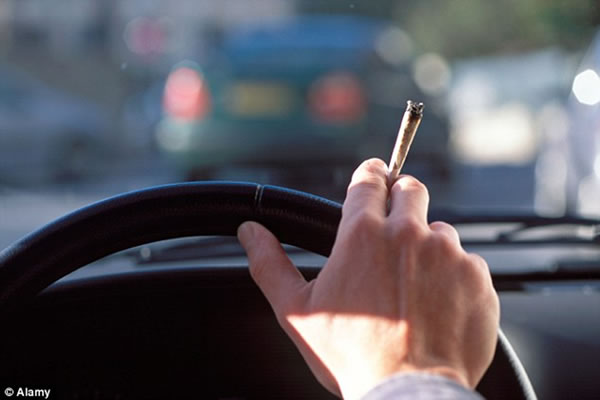- WE SAVE LIVES
- info@wesavelives.org
What Level of THC in Blood Causes Driving Impairment?

The Courage to Intervene
May 8, 2018
Driving High Means DUI
June 21, 2018This is the first part of an educational series on marijuana and driving.
By Ed Wood
Let us provide a rational answer to a nonsensical question. It is a nonsensical question because blood is never impaired by THC. Never. Alcohol doesn’t impair blood either. These drugs only impair the brain, not the blood.
We can only test for drug content in the brain by means of an autopsy, something most drivers would reasonably object to.
We test blood as a surrogate for what’s in the brain. For alcohol, blood is a very good surrogate. Alcohol is a tiny, water-soluble molecule that rapidly crosses the blood-brain barrier and quickly establishes and maintains an equilibrium concentration between what’s in the blood and what’s in the brain.
Blood is a terrible surrogate for learning the amount of THC in the brain. It’s used because we blindly follow the precedence set by alcohol, perhaps even believing the pot lobby’s mantra that marijuana should be regulated like alcohol. It’s also used because we haven’t proven anything else that’s any better. Oral fluid likely is somewhat better, but that may only be because it can be collected more quickly at the roadside.
Blood is a terrible surrogate because unlike alcohol, THC is fat-soluble. This results in three major differences in behavior compared to alcohol:
First, THC’s concentration in the blood rapidly drops as it is absorbed by the brain and other fatty tissues. When starting to smoke a joint, the THC level will be very high in the blood and very low in the brain. The brain’s THC level climbs rapidly at the same time that as it is declining in the blood. This is why blood THC levels can be dropping at the same time that the feeling of being high continues to increase. Since the brain acts like a sponge, soaking up the insoluble THC from the blood, THC concentration in the brain continues to rise while it is still declining in blood. Cadaver studies show THC can even remain in the brain when none can be found in the blood.
Second, marijuana addicts and other daily users can develop a tolerance to some, but not all of the impairing effects of THC. A per se level that might be appropriate for addicts and heavy users is a license to drive stoned for occasional and inexperienced users.
Third, the normal time from arrest to taking a blood sample is an hour, two hours in case of a serious crash, and three or more hours if a warrant is required. Since the blood level of THC drops an average of 73% within the first twenty-five minutes after starting to smoke a joint, blood test results will dramatically understate the amount of THC at the time of arrest.
Perhaps this explains why researchers agree that marijuana impairs driving, but there is no good correlation between forensically-determined blood levels of THC and impairment.
The fact is that there is no level of THC above which, everyone is impaired, and below which, no one is impaired.
None of this proves it’s safe to drive after smoking pot. It’s not. It simply explains why a defined per se limit of THC in blood that proves someone is impaired can never be supported by science.
This also may explain why the preferred means to deal with drug impaired driving is not to establish per se limits, but rather to establish a zero tolerance policy for mind altering drugs in a driver that has been shown to be impaired.
This is the essence of Tandem per se: probable cause to show that the driver was impaired, then proof that any level of an impairing drug is present in the body results in a DUID per se conviction.
About the Author
Ed Wood founded DUID Victim Voices after the death of his 33-year old son Brian at the hands of two drug impaired drivers on marijuana, methamphetamine and heroin. He has a B.S. in Chemistry from Harvey Mudd College and an MBA from University of Colorado and became the founding CEO of COBE BCT. Mr. Wood has worked with victims, prosecutors, defense attorneys, judges, clinicians, drug recognition experts, law enforcement officers, toxicologists, legislators, state officials, and an international list of researchers and other specialists in his quest to increase public knowledge about DUID. Mr. Wood has four peer-reviewed publications and wrote the 2017 law requiring Colorado to begin collecting and reporting data on drug-impaired driving.





